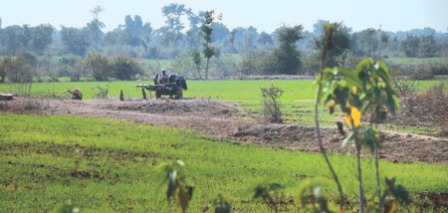 Farmers in Tindra now grow wheat and vegetables that need regular watering.
Farmers in Tindra now grow wheat and vegetables that need regular watering.
Photo: Vaibhav Raghunandan
Call it the fallout of seven years of severe drought or government inaction, a silent revolution is brewing in Lalitpur district of Uttar Pradesh. Communities are getting united and digging channels to bring water from government canals to their fields. Some are volunteering labour, while those belonging to Scheduled castes and tribes are using the government’s employment guarantee scheme to link their farms to the canals.
Their efforts are beginning to pay dividends. As one travels through Lalitpur, Tindra and Budwani villages present a sharp contrast to the situation prevailing in the district. Despite a prolonged dry spell, residents are harvesting two to three crops a year. And those who had migrated are returning home. The ball was set rolling at a funeral meeting in Tindra in April 2007.
Facing a severe drought since 2003, farmlands in the village looked like a moonscape. Deficit monsoon—40 to 50 per cent—ensured farming only in one tenth of the 140 hectares (ha) farmland. All but six of the 56 families in the village had migrated in search of living. “A few of them would visit the village only in case of a death,” said Uttam Singh, who works on livelihood issues with Parmarth, a non-profit in Uttar Pradesh. He visited the village for three years to initiate drought-proofing measures. “I could hardly find anybody,” he recalled. So he took the funeral meeting as an opportunity and talked to the gathering about a new life for their village.
/articles/channels-change-down-earth